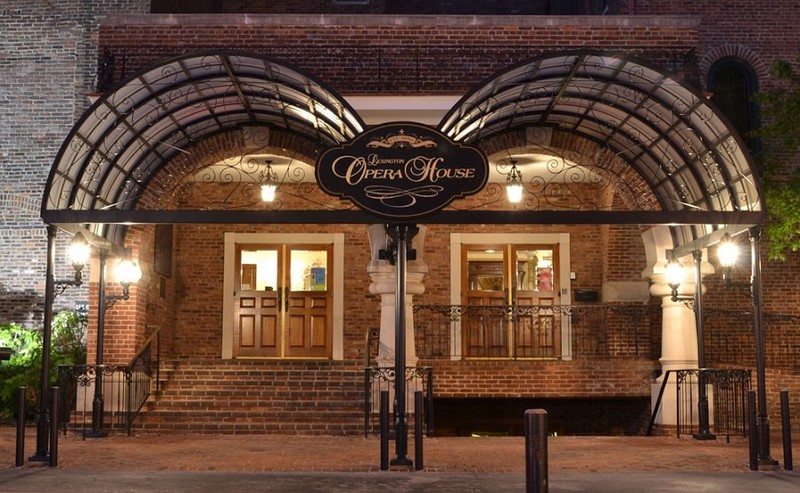Lexington Opera House
Introduction
Text-to-speech Audio
Images
The Lexington Opera House is on the National Register of Historic Places. It was designed by architect Oscar Cobb.

The Lexington Opera House was built in 1886 and renovated in 1976.

Backstory and Context
Text-to-speech Audio
The Opera House, which opened in 1850, was one of many theatres around Broadway and Main Streets in Lexington, but it quickly surpassed the others in popularity. Though it was a simple structure, the theater occasionally attracted nationally-renowned acts like Edwin Booth and Buffalo Bill as well as hordes of tourists. However, a fire on January 15, 1886 destroyed the building and nearby stables, hotels, restaurants, and other businesses. Construction on a new theater on the same site began just five months later. Architect Oscar Cobb of Chicago came up with a grand vision for the new theater. Every seat was cushioned, and some were upholstered in morocco leather or velvet. The walls were adorned with frescoes, which were lit by over two-hundred gaslights. New plumbing ensured that the theater could be quickly flooded in case of another fire and helped to keep the building cool, as the water came from a nearby ice factory.
The Opera House reopened on July 19, 1887 with a concert by the Cincinnati Symphony. One month later, Our Angel became the first play performed in the new theater. Being situated between major theater circuits in Louisville and Cincinnati, the Lexington Opera House became a convenient stop for traveling shows. One of the most memorable was Henry Regatta in 1890, for which the entire stage was flooded since most of the performance took place in rowboats. Three years later, A Country Circus graced the stage with a mile-long parade and over about one-hundred animals. In 1904, the stage had to be partially remodeled to accommodate the on-stage chariot race in Ben Hur. Over the next few years, other big acts, like Will Rogers, Mae West, and the Marx Brothers, would also come to the Opera House.
However, with the entrance into the twentieth century came the popularity of a new medium: motion pictures. Between competition from radio and movie theaters, the Opera House had no choice but to adapt. It closed for a brief time in the 1920s while it was converted into a movie house; part of the remodel requiring a false ceiling to be constructed. Still, some big names did perform at the theater during the next few years, including Lillian Russell, Harry Houdini, Sarah Bernhardt, W. C. Fields, Helen Hayes, and the Barrymore family. The last live performance at the Lexington Opera House was of The Arabian on October 1, 1926. Afterward, the theater continued to operate successfully as a movie palace despite the arrival of sound films and the Great Depression.
Price Coomer, who began working at the Opera House in 1930, later became its owner in 1955, buying it from the previous owner Harry Schwartz. Coomer remodeled the theater several times over the years, helping it keep up with the times. In 1961, the Opera House and the adjacent building, Peerless Laundry, were slated for demolition. Peerless Laundry was razed, but the Opera House was saved when abnormally strong winds pushed against the theater in 1968 or 1973 (sources differ). With no building next door to take the brunt of the wind, the Opera House was damaged as winds caused part of the false ceiling to fall. This damage brought the theater to the attention of local preservations, who began restoring it soon after. The Lexington Opera House officially reopened in 1976 as a performing arts venue.
Sources
Lexington Opera House. National Park Service: Lexington, Kentucky: The Athens of the West. Accessed April 01, 2019. https://www.nps.gov/nr/travel/lexington/lop.htm.
